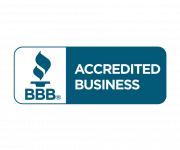
Social media advertising has become an essential tool for businesses looking to reach their target audience and drive conversions. But how can you ensure that your investment in social media ads is paying off? Understanding the return on investment (ROI) of social media ads is crucial in determining the success of your advertising campaigns.
ROI measures the profitability of an investment by comparing the gain from the investment to its cost. In the context of social media ads, ROI represents the revenue generated from the ads compared to the amount spent on running those ads. By understanding the ROI of your social media ads, you can make informed decisions about your advertising budget and optimize your campaigns for maximum effectiveness.
To calculate ROI for social media ads, you need to track key metrics such as conversions, click-through rates (CTR), cost per click (CPC), and cost per acquisition (CPA). These metrics provide insights into the performance of your ads and help you evaluate the effectiveness of your advertising strategy. Understanding the ROI of social media ads enables you to identify areas for improvement and make data-driven decisions to enhance your advertising efforts.
Key Metrics to Measure ROI
To measure the ROI of your social media ads, you need to track several key metrics. These metrics provide valuable insights into the performance of your ads and help you determine the effectiveness of your advertising strategy. Here are some key metrics to consider:
- Conversions: Conversions represent the actions you want users to take after seeing your ads, such as making a purchase or filling out a form. Tracking conversions allows you to measure the success of your ads in driving desired actions.
- Click-through Rate (CTR): CTR measures the percentage of people who click on your ads after seeing them. A high CTR indicates that your ads are compelling and relevant to your target audience.
- Cost per Click (CPC): CPC measures the average cost you pay for each click on your ads. By tracking CPC, you can assess the cost-effectiveness of your ads and optimize your bidding strategy to achieve lower costs.
- Cost per Acquisition (CPA): CPA measures the average cost you pay to acquire a customer through your ads. Tracking CPA helps you evaluate the profitability of your campaigns and make adjustments to improve your ROI.
By monitoring these key metrics, you can gain insights into the performance of your social media ads and make data-driven decisions to optimize your ROI.
Strategies to Increase ROI
Maximizing the ROI of your social media ads requires implementing effective strategies. Here are some strategies to consider:
- Target the right audience: Identifying and targeting your ideal audience is crucial for maximizing the effectiveness of your ads. By understanding your target audience’s demographics, interests, and behaviors, you can create personalized ad campaigns that resonate with them and drive higher conversions.
- Optimize ad creative and copy: The visual elements and copy of your ads play a significant role in capturing the attention of your audience. Use compelling visuals, engaging headlines, and persuasive copy to make your ads stand out and entice users to take action.
- Test different ad formats and placements: Experiment with different ad formats, such as image ads, video ads, and carousel ads, to see which performs best for your target audience. Additionally, test different ad placements across various social media platforms to identify the most effective channels for reaching your audience.
- Use retargeting campaigns: Retargeting allows you to reach users who have previously interacted with your website or shown interest in your products or services. By serving tailored ads to these users, you can increase the likelihood of conversions and boost your ROI.
Implementing these strategies can help you optimize your social media ad campaigns and achieve a higher ROI.
Optimizing Ad Creative and Copy
The creative elements and copy of your social media ads have a significant impact on their performance and ultimately, your ROI. Here are some tips for optimizing your ad creative and copy:
- Use eye-catching visuals: Images or videos that grab attention and convey your message effectively are more likely to attract users’ interest and drive engagement. Consider using high-quality visuals, vibrant colors, and compelling designs to make your ads visually appealing.
- Craft compelling headlines: Your ad headlines should be concise, attention-grabbing, and convey the value proposition of your product or service. Use powerful words, highlight benefits, and create a sense of urgency to entice users to click on your ads.
- Write persuasive ad copy: The body text of your ads should provide additional information about your product or service and persuade users to take action. Clearly communicate the benefits, unique selling points, and any special offers or promotions to convince users to click through to your website or make a purchase.
- Incorporate strong call-to-action (CTA): A clear and compelling CTA tells users exactly what action you want them to take. Use action verbs, such as ‘Shop Now,’ ‘Sign Up,’ or ‘Learn More,’ to prompt users to engage with your ads.
By optimizing your ad creative and copy, you can increase the effectiveness of your social media ads and improve your ROI.
A/B Testing for Improved ROI
A/B testing, also known as split testing, is a valuable technique for improving the ROI of your social media ads. It involves creating multiple variations of an ad and testing them against each other to determine which performs better. Here’s how you can use A/B testing to improve your ROI:
- Test different ad elements: Create variations of your ads by changing elements such as the headline, visuals, ad copy, or call-to-action. Run these variations simultaneously and track the performance metrics to identify which version generates better results.
- Test different audience segments: Split your target audience into different segments and show each segment a different version of your ad. This allows you to determine which ad resonates best with each segment and optimize your targeting strategy.
- Test different ad placements: Experiment with different ad placements across various social media platforms. Compare the performance of your ads on different platforms to identify the most effective channels for reaching your target audience.
By conducting A/B tests, you can gather valuable data about your ads’ performance and make data-driven decisions to improve your ROI.



